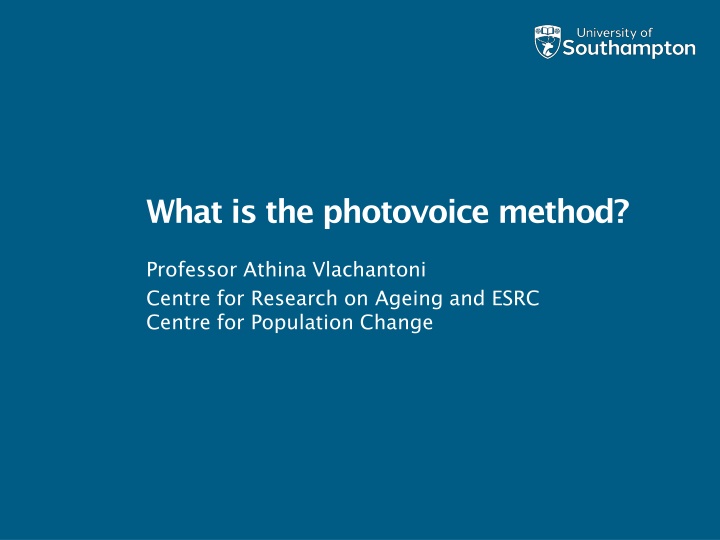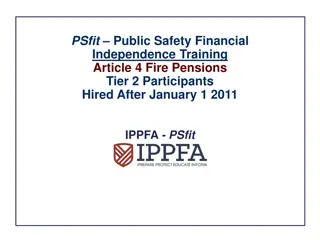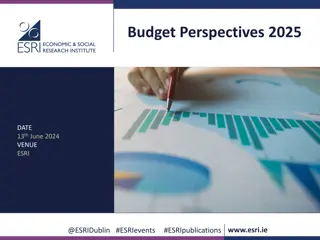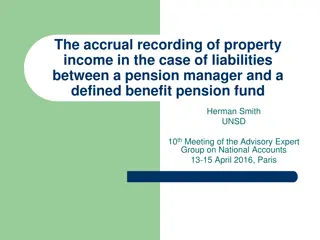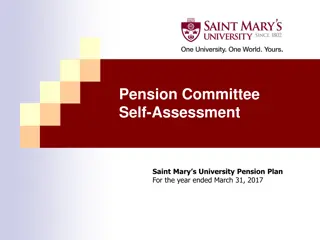Promoting Inclusivity in Pension Protection Through Photovoice Method
Photovoice is a methodology emphasizing participant insights, voice in selecting and interpreting images, and dialogue with researchers. It's utilized in a project exploring financial resilience among Black and minority ethnic communities in the UK, engaging with local policymakers and communities.
Download Presentation

Please find below an Image/Link to download the presentation.
The content on the website is provided AS IS for your information and personal use only. It may not be sold, licensed, or shared on other websites without obtaining consent from the author.If you encounter any issues during the download, it is possible that the publisher has removed the file from their server.
You are allowed to download the files provided on this website for personal or commercial use, subject to the condition that they are used lawfully. All files are the property of their respective owners.
The content on the website is provided AS IS for your information and personal use only. It may not be sold, licensed, or shared on other websites without obtaining consent from the author.
E N D
Presentation Transcript
What is the photovoice method? Professor Athina Vlachantoni Centre for Research on Ageing and ESRC Centre for Population Change
The research project Promoting inclusivity in pension protection and other forms of saving among men and women from black and minority ethnic communities in the UK: a mixed methods study Funded by the ESRC s Inclusive Ageing call Statistical analysis of national data Photo-voice and interviews with older persons Financial resilience for later life Engagement with local community Engagement with local and national policymakers 2
The research team PROF ATHINA PROF YUANYUAN YIN, winchester school of art VLACHANTONI, Centre for research on ageing, social sciences DR SADDAF NAAZ AKHTAR, centre for research on ageing, social sciences DR SPELA MOCNIK, centre for research on ageing, social sciences
Photovoice as a methodology Sometimes described as photo elicitation emphasis on eliciting insights from participants (Pink et al 2011) Focus on the participant s voice in choosing what photos to take (Castleden et al 2008) Focus on the participant s voice in interpreting the images, the context, the dynamic processes, the constructions of different concepts (Wang and Burris 1997) Progress into a dialogue between the researcher and the participant which relates to the focus of the research (Winton 2016) Continuous emphasis on the participant s worldview/ perspective Analysis of data using qualitative methods Why did you take this photo when thinking of topic X? Please take photos on topic X What are your views on topic X?
In our project Schedule ACTIVITY Factors explored Household finances Think about your typical week and countless financial decisions that you make daily, be it grocery shopping or putting aside money for rainy days. Think about how you spend, budget, and save money and how these decisions impact your life short- and long-term. Budgeting Attitudes to money WEEK 1 Financial circumstances and decisions Culture, intra-family support Earnings Take photographs of landscapes/ objects/ people/ situations/ symbols to express what you perceive and experience as financial planning. Take photographs during normal daily routines, in familiar public places and at home. Current needs and consumption Barriers / facilitators of saving Awareness and pension knowledge Structural factors Think about your life before the pandemic and think about it now. What are some of the changes (in relation to finances, work and/or savings) that have taken place in your life over the past three years? Try to photograph some of those changes. Budgeting WEEK 2 COVID-19 and cost of living crisis Current needs and consumption Saving priorities Earnings Awareness and pension knowledge [if retired] How does your everyday life look like? Try to photograph things that you enjoy doing as a retiree and those that are less enjoyable for you. Is this how you imagined your retirement to be? If not, how had you imagined it? Intergenerational, intra-family support WEEK 3 Retirement Culture Access to information [if not yet retired] How would you like your retirement to look like? How do you imagine it will look like? Advice and guidance
Energy, health, pets, family, expenditure etc etc
Reflections on using the photovoice method The method really does place the participant at the heart of the investigation even more important for research on under-represented groups Creativemethod a picture is a thousand words very useful for a topic like financial resilience where sensitive aspects might be difficult to convey or initiate a conversation on Method open to diversity how do individuals with diverse characteristics, background, religion, etc. talk about finances? Method open to interdisciplinarity ideal for multidisciplinary research team where different concepts, narratives, ways of talking about topics are embedded One of our clients who needs advice on debt has a massive amount of savings for his daughter s wedding So he is not really in debt? Oh yes he is. He can t use those savings on anything else Challenges: categorisation, interpretation, making sense of immense diversity
Some useful references Castleden H, Garvin T; Huu-ay-aht First Nation. Modifying Photovoice for community-based participatory Indigenous research. Soc Sci Med. 2008 Mar;66(6):1393-405. Gaver, W., Dunne, T. and Pacenti, E. 1999. Cultural Probes. Interactions, 6, 1, 21-9. Pink, S. (2011) Images, Senses And Applications: Engaging Visual Anthropology , Visual Anthropology, 24(5): 437-454 Wang C, Burris MA. Photovoice: concept, methodology, and use for participatory needs assessment. Health Educ Behav. 1997 Jun;24(3):369-87. Winton, A. (2016). Using photography as a creative, collaborative research tool. Qualitative Report, 21(2), 428 449.
